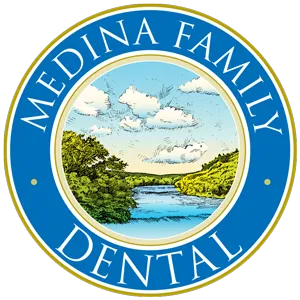TEETH WHITENING
TEETH WHITENING
Teeth whitening (or bleaching) is a simple, non-invasive dental treatment used to change the color of natural tooth enamel and is an ideal way to enhance the beauty of your smile.
Because having whiter teeth has now become the number one aesthetic concern of most patients, there are a number of ways to whiten teeth. The most popular method is using a home teeth whitening system that will whiten teeth dramatically. Since teeth whitening only works on natural tooth enamel, it is important to evaluate replacement of any old fillings, crowns, etc. Replacement of any restorations will be done after bleaching so they will match the newly bleached teeth.
Teeth whitening is not permanent. A touch-up may be needed every several years, and more often if you smoke, drink coffee, tea, or wine.

Reasons for teeth whitening:
Teeth whitening (or bleaching) is a simple, non-invasive dental treatment used to change the color of natural tooth enamel and is an ideal way to enhance the beauty of your smile.
Because having whiter teeth has now become the number one aesthetic concern of most patients, there are a number of ways to whiten teeth. The most popular method is using a home teeth whitening system that will whiten teeth dramatically. Since teeth whitening only works on natural tooth enamel, it is important to evaluate replacement of any old fillings, crowns, etc. Replacement of any restorations will be done after bleaching so they will match the newly bleached teeth.
Teeth whitening is not permanent. A touch-up may be needed every several years, and more often if you smoke, drink coffee, tea, or wine.
Reasons for teeth whitening:
Fluorosis (excessive fluoridation during tooth development)
Normal wear of outer tooth layer
Stained teeth due to medications (tetracycline, etc.)
Yellow, brown stained teeth
Fluorosis (excessive fluoridation during tooth development)
Normal wear of outer tooth layer
Stained teeth due to medications (tetracycline, etc.)
Yellow, brown stained teeth
What does teeth whitening involve?
What does teeth whitening involve?
This type of teeth whitening usually requires two visits. At the first appointment, impressions (molds) will be made of your teeth to fabricate custom, clear, plastic, trays.
At your second appointment, you will try on the trays for proper fit, and adjustments will be made if necessary. The trays are worn with special whitening solution either twice a day for 30 minutes or overnight for a couple of weeks depending on the degree of staining and desired level of whitening. It is normal to experience tooth sensitivity during the time you are whitening your teeth, but it will subside shortly after you have stopped bleaching.
You will receive care instructions for your teeth and trays, and be encouraged to visit your dentist regularly to help maintain a beautiful, healthy, white smile.
This type of teeth whitening usually requires two visits. At the first appointment, impressions (molds) will be made of your teeth to fabricate custom, clear, plastic, trays.
At your second appointment, you will try on the trays for proper fit, and adjustments will be made if necessary. The trays are worn with special whitening solution either twice a day for 30 minutes or overnight for a couple of weeks depending on the degree of staining and desired level of whitening. It is normal to experience tooth sensitivity during the time you are whitening your teeth, but it will subside shortly after you have stopped bleaching.
You will receive care instructions for your teeth and trays, and be encouraged to visit your dentist regularly to help maintain a beautiful, healthy, white smile.
Bleeding gums– Gums should never bleed, even when you brush vigorously or use dental floss.
Loose teeth– Also caused by bone loss or weakened periodontal fibers (fibers that support the tooth to the bone).
New spacing between teeth– Caused by bone loss.
Persistent bad breath– Caused by bacteria in the mouth.
Pus around the teeth and gums– Sign that there is an infection present.
Receding gums– Loss of gum around a tooth.
Red and puffy gums– Gums should never be red or swollen.
Tenderness or Discomfort– Plaque, calculus, and bacteria irritate the gums and teeth.
Removal of calculus (tartar): Calculus is hardened plaque that has been left on the tooth for some time and is now firmly attached to the tooth surface. Calculus forms above and below the gum line and can only be removed with special dental instruments.
Removal of plaque: Plaque is a sticky, almost invisible film that forms on the teeth. It is a growing colony of living bacteria, food debris, and saliva. The bacteria produce toxins (poisons) that inflame the gums. This inflammation is the start of periodontal disease!
Teeth polishing: Remove stain and plaque that is not otherwise removed during tooth brushing and scaling.
RELATED PROCEDURES
RELATED PROCEDURES
What is Periodontal (Gum) Disease?
Diagnosis
Treatment
Maintenance
What is Periodontal (Gum) Disease?
Diagnosis
Treatment
Maintenance
RELATED PROCEDURES
Dental Exams & Cleanings
Dental X-rays
Home Care
How to Properly Brush & Floss
Schedule A Visit With Us Today!
Questions?
Give us a call today!
Address:
1313 Petersburg Street
Castroville, Texas 78009
Email:
Hours:
Monday - Thursday 8am to 5pm
Closed Friday - Sunday
© 2025. Medina Family Dental.
All Rights Reserved. Opt-In Form.


